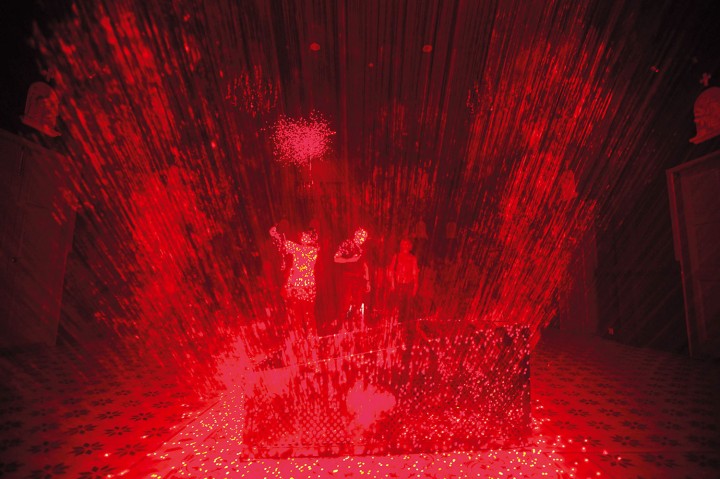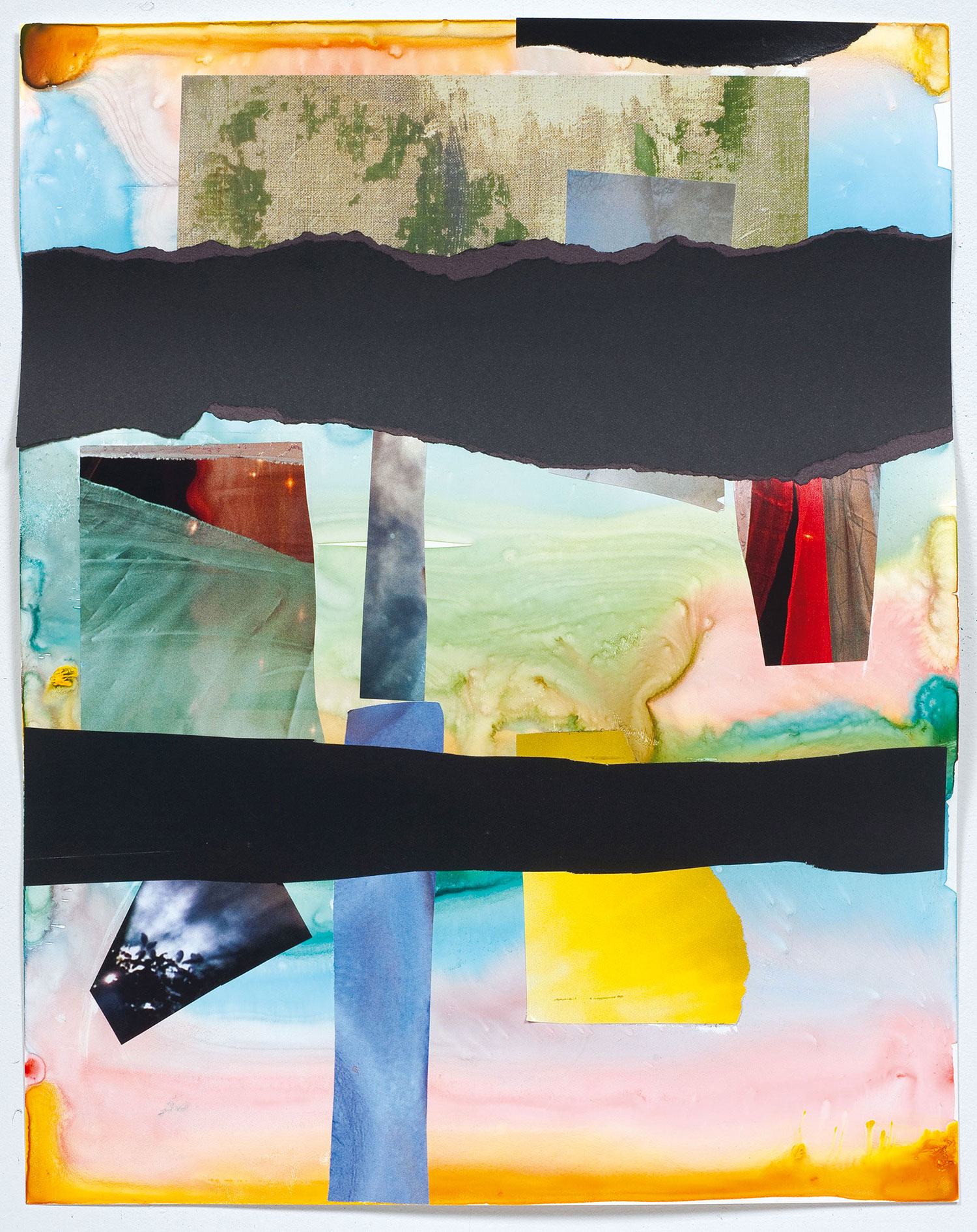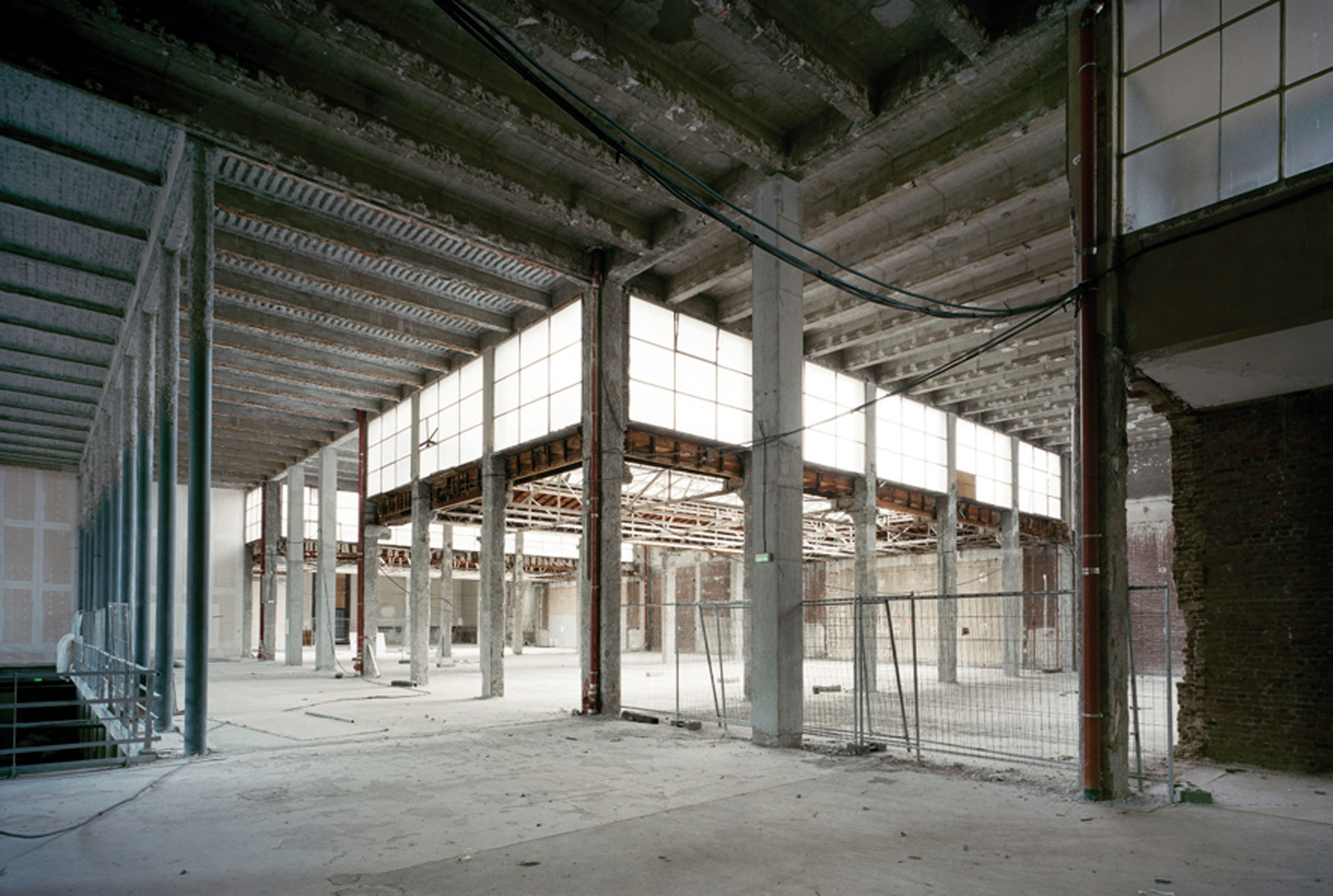
“The Collectors Show: Chimera” at the Singapore Art Museum, comprising 28 contemporary works by 18 Asian artists from private collections, is a breath of fresh air. For one, the show’s liberation from the slew of art-world brand names marks a bold departure from the usual crowd-pulling tactics cultural institutions employ. Where the stars do appear, like Takashi Murakami and Yayoi Kusama, they are not cast as soloists as in a concerto, but are merely two of many voices humming to a well-orchestrated Asian ensemble. Conceived to “present alternative streams of contemporary art in Asia,” curator Sui Li Tan masterfully engineers aesthetics to be the first point of entry through which “specters of our age“ can be confronted. The result: a sumptuous walk-through of Asian mythologies and illusions in all their myriad and hybrid forms, reinterpreted and appropriated by artists of the soil. Children are seen prancing around Li Hui’s V, (2011) a phantasmagorical spectacle of red thread-like refracted light beams; adults kept a reverential distance, open-mouthed, as if encountering an apparition. Yet beneath its beauty, the work speaks of the collision and birth of energies in the Zen cosmos. Equally arresting and perhaps more intimate is Tabaimo’s Midnight Sea (2006/2008), a digital projection of churning waves somewhat reminiscent of Hokusai’s 19th-century rendering, metaphorically bemoaning the ebb and flow of life and its superficiality. Aesthetics is a clever guise in Rashid Rana’s Red Carpet (2007), a tapestry with a deceptively conventional appearance made up of tiny bloodied images of butchered goats — a commentary on man’s equally capability for beauty and brutality. Even Sheba Chhachhi’s powerful installation of life-size pilgrims in Buddhist robes in Winged Pilgrims: A Chronicle From Asia (2006) has a striking but disconcerting presence. Surrounded by layered images of birds in slow motion juxtaposed against imagined landscapes on screens, the work laments how modernization and global exchange have contributed to man’s debased relationship with nature. Not all the works engage through visual pomp and splendor. Some solicit it via more introspective means. Flanking the entrance are Entang Wiharso’s larger-than-life aluminum figures that recall reliefs found in temple monuments of Southeast Asia. Finished in a modern-day material, they embrace the complex web of humanity with its spectrum of trials and tribulations. Hamra Abbas’s Please Do Not Step I (2004), Kaaba-like construct with a walled-in giant prayer rug, assembled with paper laces bearing the text “Please Do Not Step,” hinted at commonalities found in different belief systems and the narrow negotiations that exist between them. Culled from Southeast Asia, East and South Asia and as far ashore as the Middle East, Europe and America, the show reveals a level of maturity in these collectors’ tastes and an appetite for new media — in contrast to the common impression of Asian collectors in auction rooms. It speaks movingly of their love of Asian culture and their deep engagement with the art of the time. It is, most of all, an encouraging account of how a young cultural institution has adapted its role in the age of technology. By thoughtfully presenting cultural legacies and cutting-edge contemporary content through physicality, materiality and immersive experiences via accessible means, every viewer is made to feel empowered and enriched.





